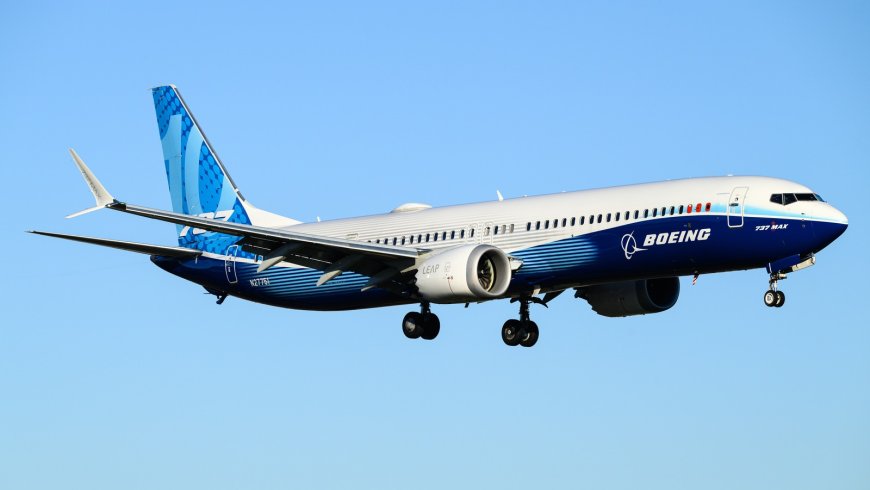EXCLUSIVE: Kenya Airways To Add Boeing 737 MAX Aircraft To Its Fleet In 2026
Kilavuka, however, revealed that their arrival will not meet the timeline initially announced in a statement he issued on behalf of the airline on Monday, July 14.

Kenya Airways (KQ) has confirmed that it will bring on board Boeing 737 MAX passenger aircraft to its fleet by early 2026, as it seeks to boost passenger capacity amid rising demand in air travel.
KQ CEO Allan Kilavuka, in response to a question raised by Viral Tea regarding the status of the three narrow-body aircraft it planned to add in the fourth quarter of 2025, stated that the airline had intended to order three of the MAX aircraft, though on a long-term lease.
"We were saying that we want to bring capacity; three narrow bodies...these are 3 MAXs that we wanted to order. This is on an operating lease; in other words, we lease the aircraft on a long-term basis," he remarked.
Regarding the addition of the aircraft, Kilavuka, however, revealed that their arrival will not meet the timeline initially announced in a statement he issued on behalf of the airline on Monday, July 14. The CEO thus indicated that the latest the new aircraft can be expected to arrive in its fleet is March 2026.

Photo of a Boeing 737 MAX aircraft in flight. /JALOPNIK
"The aircraft are not ready by Q4, which we were hoping that they would be ready by Q4; we were hoping to bring one in October, the other in November, the other in December. Unfortunately, they will not be ready by that time, so the timeline has moved to Q1 of next year, so the first one will be available in February and then the two others in March," he went on.
"These will be MAXs, and these will be the ones that will address some of the capacity issues that we have. Q1 is not high season, so it will not immediately address the issues that we have, but it will help us with 2026 capacity."
Good & Bad Of Boeing 737 MAX
The Boeing 737 MAX, the fourth generation of Boeing’s narrow-body 737 series, first flew in 2016 and entered service in 2017 to rival the Airbus A320neo. It promised airlines better fuel efficiency, lower costs, and updated passenger features, while retaining enough similarity to older 737s to avoid expensive retraining.
The MAX is powered by CFM LEAP-1B engines, larger and more efficient than those on the previous 737 Next Generation. Their placement altered the jet’s aerodynamics, prompting Boeing to introduce the Manoeuvring Characteristics Augmentation System (MCAS), software that would later play a central role in the aircraft’s major troubles, that is, the aircraft gaining widespread popularity for the wrong reasons.
In October 2018, Indonesian low-cost airline Lion Air Flight 610 crashed into the Java Sea, killing 189 people. Five months later, in a major incident that hit close to home, Ethiopian Airlines Flight 302 crashed outside Addis Ababa while en route to Nairobi, killing 157. Both were tied to MCAS misfires caused by faulty sensors.
In response, regulators grounded the 737 MAX worldwide in March 2019, marking the longest grounding of a commercial jet. Investigations criticised Boeing’s design choices, certification shortcuts, and corporate culture, reshaping aviation oversight.
After nearly two years of fixes—including MCAS software updates, added redundancy, and stricter pilot training—the U.S. Federal Aviation Administration cleared the jet to return in late 2020, followed by other regulators. Airlines reintroduced the MAX in 2021, and despite early passenger hesitation, confidence gradually returned as the plane logged millions of safe hours.
Since then, deliveries have accelerated. The MAX family includes the MAX 7, MAX 8, MAX 9, and the delayed MAX 10, aimed at competing with Airbus’s A321neo. By August 2025, over 1,500 MAX jets will be flying worldwide, with thousands more on order, making it critical to Boeing’s recovery despite continued quality-control concerns.
Airlines see the MAX as indispensable, citing fuel efficiency and range. Global carriers like Southwest, Ryanair, and United Airlines rely heavily on it. Passengers, meanwhile, have largely moved on, though the MAX name still haunts a few ardent flyers.
Today, the 737 MAX flies profitably and safely, but its troubled past means every minor issue draws outsized attention—leaving it both Boeing’s lifeline and lasting cautionary tale.
What Entry Of Boeing 737 MAX Will Mean For Kenya Airways
For KQ, the addition of this aircraft will be integral in the increase of its passenger capacity in response to criticism that stemmed last year over its 13 Embraer aircraft, the most in KQ's fleet, which have been viewed as unable to meet the demands of long-haul flights and less appealing to passengers ferrying high volumes of luggage.
According to Kilavuka, in responding to Viral Tea, KQ's plan for higher seat capacity will include a possible trade of one of the Embraer aircraft to accommodate the MAXs, the exact variant of the MAX in this case, he did not immediately mention.
"The idea is exchanging no seat capacity with higher seat capacity, in other words, the Embraer, which seats 96 people, with the 737, which will seat anything up to 160 people, so doubling the capacity with the exchange of one aircraft...that is a way to address the seat capacity. More importantly, even what we have today to make sure we are flying as many of them as possible," he added.
In 2021, the Kenya Civil Aviation Authority (KCAA) cleared the 737 MAX 8 to resume flights in Kenya's airspace following the double crashes in Ethiopia and Indonesia, allowing carriers like Ethiopian Airlines and Turkish Airlines, which have the jets in their fleets, to fly to Nairobi, a move that at the moment gives KQ confidence to order the jet.
Kenya Airways announced on Tuesday, August 26, that it is working to secure at least Ksh64.6 billion ($500 million) in additional funding by the first quarter of next year to upgrade and grow its fleet.
The carrier, ranked among Africa’s top three airlines, recorded a net loss after tax of Ksh12.15 billion in the first half of 2025, a sharp reversal from a similar period in the first half of the financial year ending June 30, 2024, when the airline achieved a profit after tax of Ksh513 million.







